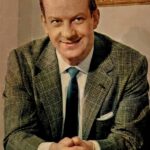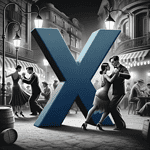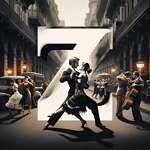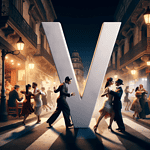Welcome, passionate tango enthusiasts! In the heart of Buenos Aires, where the soulful notes of the bandoneón resonate through the cobblestone streets, we delve into the captivating world of Argentine Tango. In this article, we’ll explore the life and musical journey of the remarkable Eduardo Armani, a virtuoso violinist and orchestra director who left an indelible mark on the tango scene.
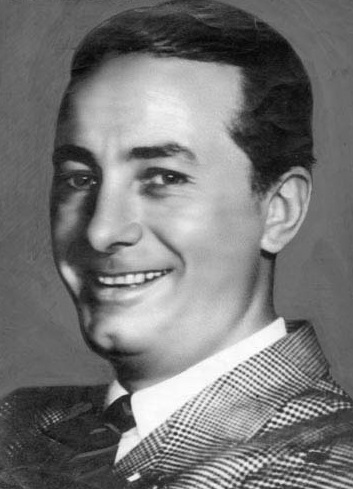
Early Years and Classical Roots
Eduardo Armani, born on August 22, 1898, in Buenos Aires, embarked on his musical journey at the Santa Cecilia Conservatory. Under the tutelage of maestros Cayetano Troiani and Hércules Galvani, Armani completed his studies at a remarkable age of 15.
Tango Meets Classical: A Harmonious Blend
Armani’s musical prowess extended beyond the classical realm. He collaborated with luminaries such as Juan Carlos Cobián and Francisco Lomuto, infusing the traditional tango with his classical finesse. Some of his notable compositions include “Normiña,” “No olvidarás,” and “Un capricho.”
Jazz Sojourn
In 1928, Armani embraced jazz, joining forces with pianist René Cóspito to create Jazz Cóspito Armani. This five-year venture produced enchanting melodies recorded for RCA Víctor.
The Tango Maestro
Armani’s orchestral independence in 1933 marked a new chapter. His jazz ensemble gained prominence on Radio El Mundo, enchanting audiences in Argentina, Mar del Plata, and Montevideo.
Top 10 Most Important Tango Songs by Eduardo Armani
These timeless compositions by Eduardo Armani remain an integral part of the tango repertoire, carrying his legacy forward and inspiring dancers around the world.
- “Vidita”
- Recording Year: 1954
- Orchestra: Eduardo Armani
- Singer: Eduardo Farrell
- Details: A timeless classic, “Vidita” showcases Armani’s compositional brilliance and the emotive vocals of Eduardo Farrell. Its enchanting melody continues to resonate on the dance floors of Milonga events.
- “Normiña”
- Recording Year: N/A
- Orchestra: Eduardo Armani
- Singer: N/A
- Details: A composition that reflects Armani’s fusion of classical and tango influences, “Normiña” stands as a testament to his innovative approach to music.
- “Un capricho”
- Recording Year: N/A
- Orchestra: Eduardo Armani
- Singer: N/A
- Details: This whimsical piece, “Un capricho,” highlights Armani’s ability to infuse tango with elements of playfulness and creativity.
- “Ala, como estás”
- Recording Year: N/A
- Orchestra: Eduardo Armani
- Singer: N/A
- Details: An engaging and rhythmic composition, “Ala, como estás” captures the essence of Armani’s musical style, inviting dancers into a lively tango experience.
- “Borrachera”
- Recording Year: N/A
- Orchestra: Eduardo Armani
- Singer: N/A
- Details: With its spirited tempo, “Borrachera” is a tango that continues to energize dance floors, showcasing Armani’s skill in creating music that resonates with the passion of Argentine Tango.
- “El vendedor de cocos”
- Recording Year: N/A
- Orchestra: Eduardo Armani
- Singer: Jorge David Monsalve
- Details: Sung by Jorge David Monsalve, this composition brings a touch of the Caribbean to the tango scene, representing the joyful spirit of the Colombian coast.
- “Marbella”
- Recording Year: N/A
- Orchestra: Eduardo Armani
- Singer: N/A
- Details: A captivating piece that takes dancers on a rhythmic journey, “Marbella” showcases Armani’s ability to weave diverse musical elements into the fabric of tango.
- “Las pilanderas”
- Recording Year: N/A
- Orchestra: Eduardo Armani
- Singer: N/A
- Details: “Las pilanderas” is a vibrant and lively composition, reflecting Armani’s skill in creating music that captures the vivacity of Argentine Tango.
- “Toca la trompeta Juancho”
- Recording Year: N/A
- Orchestra: Eduardo Armani
- Singer: N/A
- Details: With its bold and dynamic notes, “Toca la trompeta Juancho” stands out as a testament to Armani’s ability to craft tango compositions that command attention.
- “Tócame el trombón”
- Recording Year: N/A
- Orchestra: Eduardo Armani
- Singer: N/A
- Details: Closing our list, “Tócame el trombón” is a lively and rhythmic tango that showcases Armani’s mastery in creating music that continues to captivate tango enthusiasts.
The Silver Screen and Beyond
Beyond the stage, Armani ventured into the cinematic realm, leaving his mark in Argentine cinema’s golden age. He played a pivotal role in introducing the actress Blackie to the music of the black community, showcasing the diversity of tango.
Musical Legacy
Armani’s musical legacy extended to collaborations with renowned artists such as Osvaldo Fresedo, Bing Crosby, Maurice Chevalier, and Frankie Laine. His orchestra graced the inauguration of the Cine Teatro Ópera, interpreting George Gershwin’s “Rapsodia en azul” in a momentous performance.
Farewell to the Stage
Eduardo Armani continued his musical journey until 1963, leaving behind a legacy that resonates in the annals of Argentine tango history.
Filmography
Explore Armani’s cinematic contributions through films like “Así es el tango” (1937) and “Ven… mi corazón te llama” (1942), both showcasing his multifaceted talent as an interpreter and musician.
FAQ Section: Unveiling the Tango Maestro – Eduardo Armani
Who was Eduardo Armani, and what role did he play in the world of Argentine Tango?
Eduardo Armani was a renowned Argentine violinist and orchestra director, born on August 22, 1898, in Buenos Aires. He made significant contributions to the world of tango, blending classical influences with jazz and leaving an indelible mark on both music and cinema.
What were Eduardo Armani’s classical influences, and how did he incorporate them into his tango compositions?
Armani studied classical music at the Santa Cecilia Conservatory under maestros Cayetano Troiani and Hércules Galvani. He seamlessly blended classical finesse with tango, collaborating with notable figures like Juan Carlos Cobián and Francisco Lomuto. Some of his compositions, such as “Normiña” and “Un capricho,” reflect this harmonious fusion.
Can you elaborate on Eduardo Armani’s jazz venture with René Cóspito and the Jazz Cóspito Armani?
In 1928, Armani delved into jazz, forming the Jazz Cóspito Armani with pianist René Cóspito. This collaboration lasted five years and produced enchanting jazz compositions, showcasing Armani’s versatility and innovation in the realm of music.
What notable contributions did Eduardo Armani make to the cinematic world?
Armani ventured into Argentine cinema’s golden age, contributing to films like “Así es el tango” (1937) and “Ven… mi corazón te llama” (1942). He played a crucial role in introducing Blackie, an actress, director, and producer, to the music of the black community, adding diversity to tango.
Were there any significant collaborations or performances that Eduardo Armani participated in?
Armani’s orchestra accompanied renowned international artists such as Bing Crosby, Maurice Chevalier, and Frankie Laine during their visits to Argentina. He shared many dances with his close friend, Osvaldo Fresedo, and together they were associated with the boite Rende Vouz.
How long did Eduardo Armani’s musical career last, and what led to his eventual departure from the stage?
Eduardo Armani continued his musical journey until 1963. The reasons for his departure from the stage are not explicitly mentioned in the provided information.
Can you provide more information about Eduardo Armani’s discography and notable songs?
Eduardo Armani’s discography includes compositions like “Vidita,” a 1954 rendition by Eduardo Farrell, and songs like “Marbella” that showcase the rhythmic allure of tango. These compositions remain popular among dancers in Milonga Dance Events.
Did Eduardo Armani have any impact on the cultural and social scenes beyond his musical contributions?
Yes, Armani’s influence extended beyond music. He was responsible for introducing Blackie to the music of the black community, leading her to sing with his orchestra at the Teatro Colón. His orchestra animated social gatherings and events, leaving a lasting impact on the cultural and social scenes.
How is Eduardo Armani remembered in the present day, and is his music still influential?
Eduardo Armani’s legacy endures, with his compositions continuing to be cherished by tango enthusiasts. His innovative approach to blending genres and his collaborations with international artists contribute to his lasting influence in the world of Argentine Tango.
Where can one find more information about Eduardo Armani’s life and musical journey?
Notable sources include books such as “La Radio: Los años 30” by Ricardo Gallo, “Blackie, con todo respeto: biografía novelada” by Myriam Escliar, and others mentioned in the notable sources section of this article. These provide insights into Armani’s life, career, and contributions to the world of tango.
Notable Sources
- Gallo, Ricardo. “La Radio: Los años 30.” Buenos Aires: Corregidor, 1991.
- Escliar, Myriam. “Blackie, con todo respeto: biografía novelada.” Buenos Aires: Amia, 2007.
- Ospina, Andrés. “Ximénez.” Bogotá: Laguna, 2013.
- Horvath, Ricardo. “Memorias y recuerdos de Blackie.” Buenos Aires: Todo es Historia, 1979.
- Mora, Orlando. “La música que es como la vida.” Buenos Aires: Autores Antioqueños, 1989.
